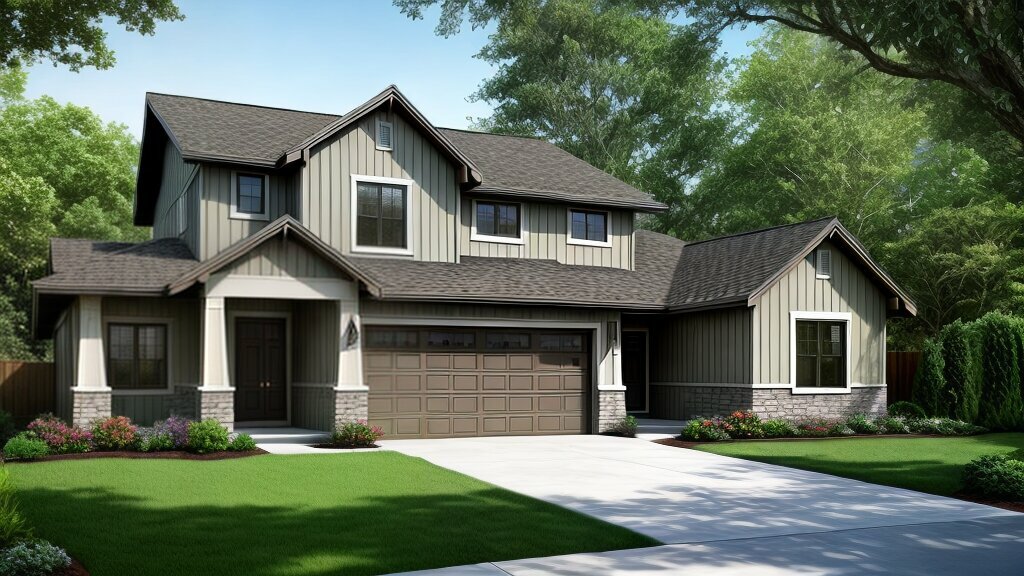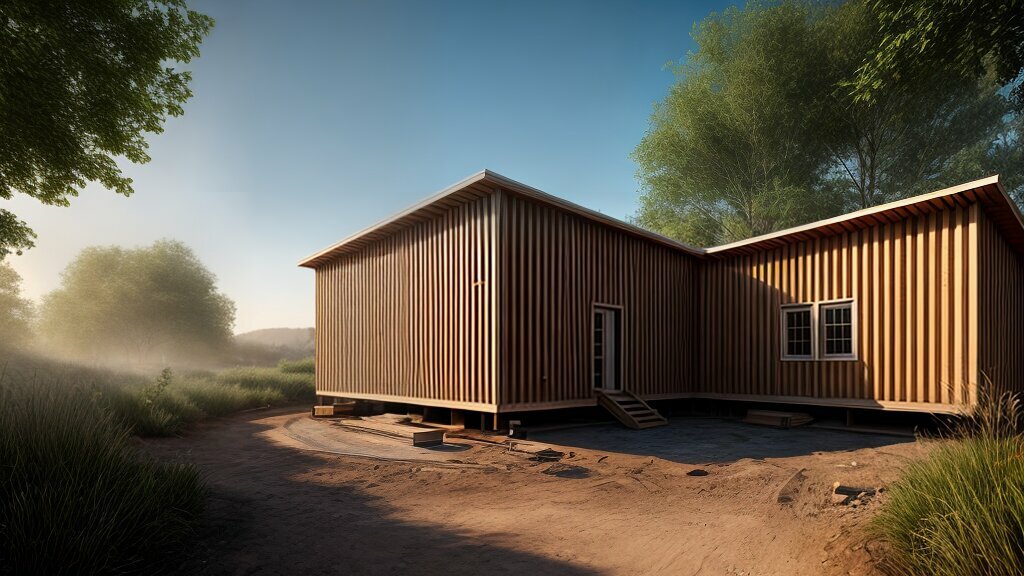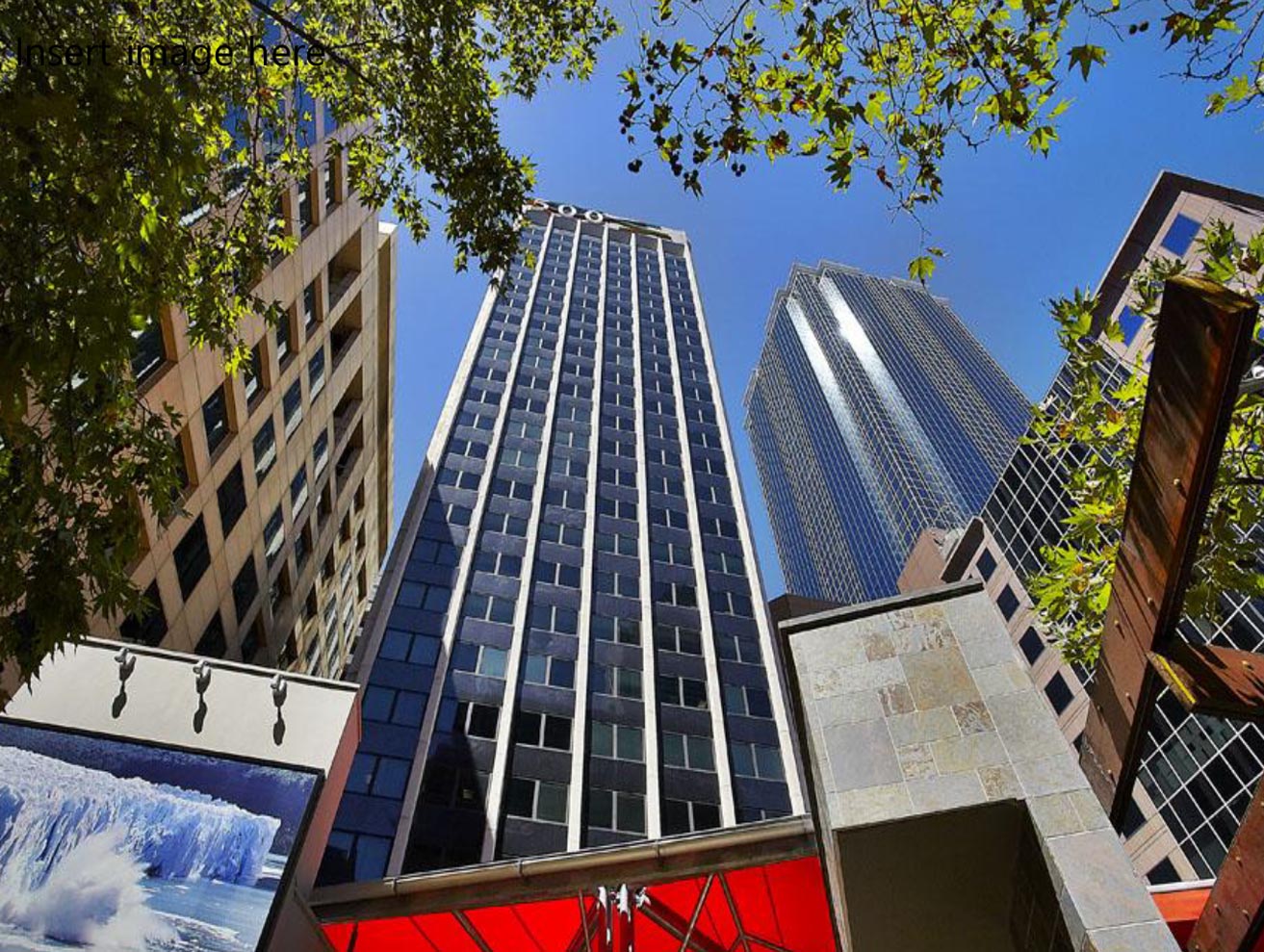Net-Zero Water Buildings: Efficient Water Use and Treatment Systems
Welcome to our article on net-zero water buildings! As we face increasing water scarcity and demand, it has become vital to adopt sustainable water management practices. Net-zero water buildings are an innovative solution that can help us achieve this goal.
Net-zero water buildings aim to reduce their water footprint to zero by utilizing efficient water use and treatment systems. These buildings not only conserve water but also reduce the burden on external water sources, such as municipal supplies and groundwater reserves.
In this article, we will explore the various strategies and techniques used in net-zero water buildings to achieve efficient water use and treatment. We will also discuss the significance of rainwater harvesting, greywater systems, water-efficient fixtures, xeriscaping, and on-site water treatment and recycling in net-zero water buildings.
Join us as we uncover how net-zero water buildings can help us create a sustainable water future.
Key Takeaways:
- Net-zero water buildings aim to reduce their water footprint to zero by utilizing efficient water use and treatment systems.
- These buildings conserve water and reduce the burden on external water sources.
- We will explore various techniques like rainwater harvesting, greywater systems, water-efficient fixtures and xeriscaping to achieve efficient water use and treatment.
Understanding Net-Zero Water Buildings
Net-zero water buildings are a sustainable solution towards efficient water management that have been gaining popularity in recent years. These buildings are designed with the aim of achieving a net-zero water balance, where the amount of water consumed on-site is equal to or less than the amount of water generated on-site. The concept of net-zero water is based on the idea of closing the water loop, reducing reliance on external water sources, and promoting responsible water use and treatment practices.
Net-zero water buildings are an integral part of environmentally conscious building design and operation, and contribute significantly towards water conservation and sustainability. They can be found in a variety of environments, ranging from residential homes to commercial buildings and even entire communities. The primary objective of net-zero water building design is to reduce water consumption by utilizing efficient water use and treatment systems.
Net-zero water buildings employ various strategies and technologies to achieve water sustainability, including rainwater harvesting, greywater systems, advanced water treatment and recycling systems, water efficient fixtures, and water-conscious behaviors. These techniques are integrated into the building design to optimize water use and minimize waste.
Overall, net-zero water buildings are a key solution towards addressing the global water crisis and creating a sustainable future. By using innovative water use and treatment systems, these buildings promote responsible water management practices and reduce the environmental impact of water consumption.

Water Efficiency Strategies for Net-Zero Buildings
Implementing water efficiency strategies is a critical element in achieving net-zero water use in buildings. These strategies involve reducing water demand while maintaining high-performance levels through careful planning, innovative design, and the use of advanced technologies.
Effective water efficiency strategies include:
1. Efficient Fixtures
Installing low-flow toilets, faucets, and showers can significantly reduce water consumption in buildings. In net-zero water buildings, water-efficient fixtures are a key element in achieving water conservation targets.
2. Water-Efficient Landscaping
Xeriscaping is a landscaping technique that reduces water usage by using drought-tolerant plants, efficient irrigation systems, and smart design principles. Xeriscaping minimizes water consumption without compromising landscape aesthetics.
3. Water-Conscious Behaviours
Behavioural change among occupants is essential in reducing water usage in buildings. Building occupants can be educated on responsible water use behaviours, including fixing leaky taps, turning off the tap when not in use, and using efficient appliances.

4. Advanced Water Treatment Technologies
“Water recycling and reuse in buildings can minimize the need for external water sources, reduce water cost, and improve overall sustainability.”
Advanced water treatment technologies are increasingly being used in net-zero water buildings to recycle and treat wastewater for reuse. Water reuse systems reduce reliance on external water sources and support sustainable water management practices.
Implementing a combination of these water efficiency strategies in net-zero water buildings can result in efficient water use and significant water conservation.
Water Conservation Techniques in Net-Zero Buildings
In addition to water efficiency strategies, net-zero water buildings also incorporate specific techniques to conserve water. These techniques are designed to reduce the reliance on external water sources and ensure maximum water use efficiency within the building. Here are some of the most common water conservation techniques employed in net-zero water buildings:
Rainwater Harvesting: Capturing Nature’s Bounty

Rainwater harvesting involves collecting and storing rainwater for various non-potable uses within the building. This technique involves the installation of gutters, downspouts, and collection tanks to capture rainwater. The collected water can be used for purposes such as irrigation and toilet flushing, thereby reducing the need for potable water sources.
Greywater Systems: Reusing Water Responsibly
Greywater systems are designed to treat and reuse wastewater generated from sources such as sinks, showers, and laundry. The water is treated to a level where it can be safely reused for non-potable purposes like landscape irrigation and toilet flushing. This technique reduces the demand for potable water sources and minimizes the amount of wastewater that needs to be treated and disposed of offsite.
Water Efficient Fixtures: Saving Every Drop
Water-efficient fixtures such as low-flow toilets, faucets, and showers are installed in net-zero water buildings to minimize water consumption without compromising performance. These fixtures are designed to use less water while maintaining the desired level of function, resulting in significant water savings over time.
Xeriscaping: Landscaping for Water Efficiency
Xeriscaping involves using drought-tolerant plants, efficient irrigation systems, and smart design principles to create beautiful landscapes while minimizing water use. This technique is particularly effective in arid climates where water resources are limited. By using xeriscaping, net-zero water buildings can reduce their outdoor water use and create visually appealing landscapes.
On-Site Water Treatment and Recycling: Closing the Loop
In net-zero water buildings, advanced treatment technologies can be utilized to purify wastewater generated within the building. The treated water can then be reused for non-potable purposes, reducing the reliance on external water sources. On-site water treatment and recycling make net-zero water buildings truly self-sustainable when it comes to water management.
Overall, water conservation techniques are essential in achieving net-zero water status in buildings. By reducing water demand, reusing water, and utilizing advanced technologies, net-zero water buildings can create a sustainable water management system that benefits the environment and building occupants alike.
Rainwater Harvesting: Capturing Nature’s Bounty
Rainwater harvesting is a key strategy used in net-zero water buildings to achieve water self-sufficiency and reduce reliance on external water sources. The process involves collecting and storing rainwater for various non-potable uses, including irrigation and toilet flushing. By integrating rainwater harvesting into building design, net-zero water buildings can significantly reduce their overall water demand and contribute to a more sustainable future.
The first step in rainwater harvesting is to install a collection system, which can range from simple rain barrels to elaborate cisterns. The collection system should be designed to capture as much rainwater as possible, depending on the climate and roofing area. The collected rainwater is then stored in a storage tank for later use, which should be large enough to accommodate the building’s demand.
| Benefits of Rainwater Harvesting | Challenges of Rainwater Harvesting |
|---|---|
|
|
Rainwater harvesting systems can be designed to be gravity-fed or pumped, depending on the building’s needs and the elevation of the storage tank. In addition, the collected rainwater may require treatment to ensure its quality and suitability for specific uses, such as irrigation or toilet flushing. Treatment may involve filtration, disinfection, or other advanced technologies.
Overall, rainwater harvesting is a valuable strategy in net-zero water buildings, offering several benefits for both the environment and building occupants. By capturing nature’s bounty, net-zero water buildings can achieve a more responsible and sustainable approach to water management.
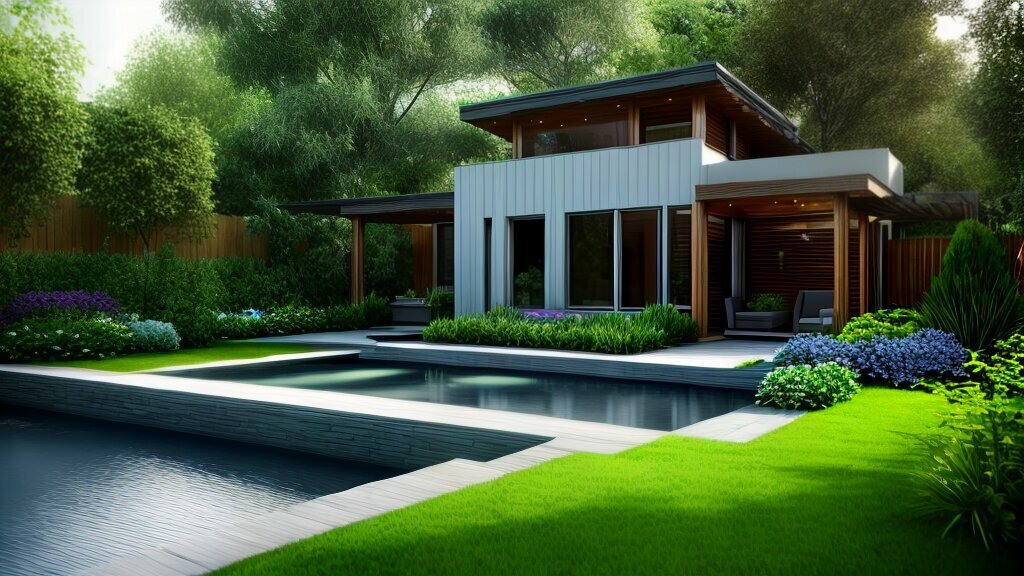
Greywater Systems: Reusing Water Responsibly
Greywater systems are an increasingly popular water conservation technique used in net-zero water buildings. These systems are designed to capture and treat wastewater from sources such as sinks, showers, and laundry, and reuse it for non-potable purposes like irrigation and toilet flushing.
Greywater is different from blackwater, which comes from toilets and contains larger amounts of pathogens and organic matter. Greywater, on the other hand, is relatively clean and can be treated easily for reuse. By diverting greywater from the sewer system, net-zero water buildings can reduce their reliance on external water sources and improve their overall water efficiency.
Greywater systems typically involve a simple process of filtration and treatment to remove impurities and make the water suitable for reuse. The treated water can then be stored in a separate tank and used for landscape irrigation or other non-potable applications. Using greywater for irrigation is particularly effective, as it can reduce outdoor water consumption by up to 50%.
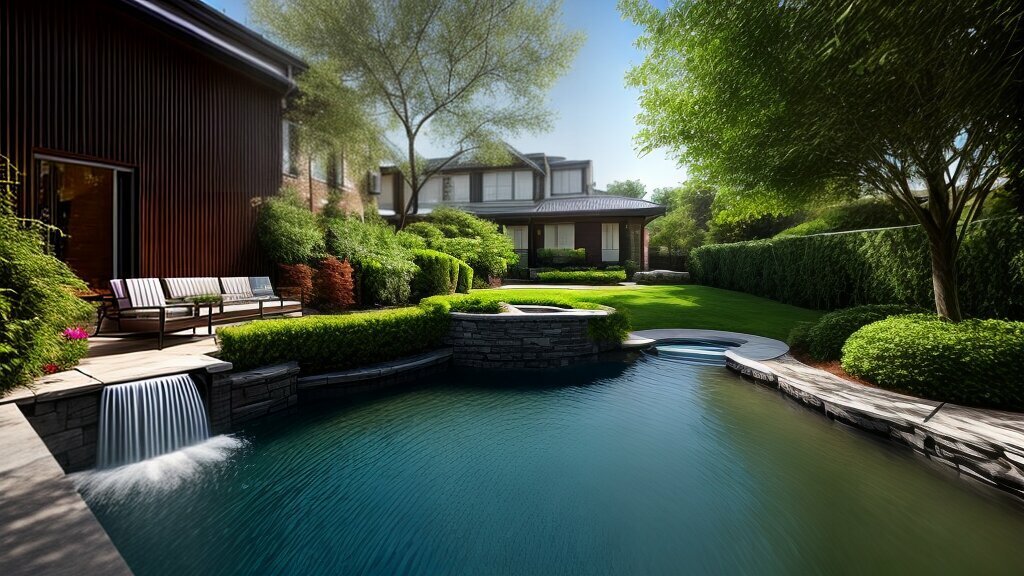
Greywater systems require some upfront investment and maintenance, but the potential water savings make them a cost-effective and environmentally responsible choice for net-zero water buildings. Additionally, some local governments offer rebates or incentives for installing greywater systems, making them an even more attractive option.
One important consideration when using greywater systems is ensuring that the water is treated and used safely. In some cases, it may be necessary to use only certain types of cleaning products or avoid discharging greywater onto certain types of soil to prevent contamination. Building occupants must also be educated on the proper use and maintenance of the system to ensure that it operates safely and efficiently.
Water Efficient Fixtures: Saving Every Drop
One of the most effective ways to reduce water consumption in net-zero water buildings is by installing water-efficient fixtures. By maximizing water efficiency without compromising performance, these fixtures can significantly reduce water use, ultimately contributing to a sustainable water management strategy.
Low-flow toilets, faucets, and showers are all popular examples of water-efficient fixtures that can be easily installed in existing buildings or integrated in new construction. These fixtures are designed to reduce water use by limiting flow rates, without affecting performance. For example, a low-flow showerhead can reduce water consumption by 50% or more, without sacrificing the shower experience.
According to the Environmental Protection Agency (EPA), water-efficient fixtures can save the average household up to 45,000 litres of water each year. This not only conserves water resources but also saves money on water bills for building owners and occupants.

Image source: seowriting.ai
Water-efficient fixtures are not just limited to toilets, faucets, and showers. In fact, there are a variety of innovative fixtures available on the market today, such as urinals that use no water at all. By utilizing these cutting-edge fixtures, net-zero water buildings can maximize water efficiency and reduce reliance on external water sources.
However, in order to maximize the benefits of water-efficient fixtures, it’s important to also promote water-conscious behaviours among building occupants. This can include simple actions such as turning off the tap while brushing teeth or shaving, fixing leaks promptly, and using dishwashers and washing machines efficiently.
Through a combination of water-efficient fixtures and responsible water use habits, net-zero water buildings can significantly reduce their water consumption, ultimately contributing to a more sustainable future.
Xeriscaping: Landscaping for Water Efficiency
One of the most effective ways to conserve water in net-zero water buildings is through xeriscaping. This landscaping technique involves selecting drought-tolerant plants, utilizing efficient irrigation systems, and implementing smart design principles to create beautiful landscapes that require minimal water.
By reducing the need for irrigation, xeriscaping can significantly decrease water usage in outdoor spaces. It also helps to prevent soil erosion and reduces the need for lawn maintenance, further lowering the demand for water.
As a bonus, xeriscaping can also enhance the biodiversity of a property by attracting a wide variety of birds, butterflies, and beneficial insects.

To implement xeriscaping, start by selecting native or drought-resistant plants that are well-suited to your climate and soil type. These plants require less water and are more resilient to the local conditions.
Next, design your landscape to take advantage of natural features such as slopes, microclimates, and existing vegetation. Group plants with similar water needs together and use mulch to retain moisture and suppress weeds.
Finally, install an efficient irrigation system that minimizes water usage and waste. Drip irrigation is an ideal choice for xeriscaped landscapes, as it delivers water directly to the plant roots and reduces evaporation.
Xeriscaping is a simple yet powerful way to reduce water usage and promote sustainability in net-zero water buildings. By incorporating this technique into your landscaping plans, you can create a beautiful and water-efficient outdoor space that complements your building’s eco-friendly design.
Water Usage Reduction Through Behavioral Changes
Reducing water consumption in net-zero water buildings is not just about implementing technology and infrastructure; it’s also about promoting water-conscious behaviours among building occupants. With a few simple changes in habits, we can significantly reduce water demand and help create a more sustainable future.
One of the most effective ways to reduce water usage is by educating and raising awareness among building occupants. Simple messages and reminders can make a big difference in encouraging responsible water use. For example, placing signs near sinks and toilets that remind people to turn off the tap when brushing their teeth or to use the half-flush option on the toilet can have a significant impact on reducing water waste.
Another effective strategy is to involve building occupants in the water conservation process. This can be achieved through initiatives such as feedback programs that inform occupants about their water usage and encourage them to reduce it. By providing real-time data on water consumption and usage trends, occupants can better understand the impact of their habits on water consumption and take action to reduce their usage.
Individual actions such as taking shorter showers, fixing leaky faucets, and using a broom instead of a hose to clean external areas, can all add up to significant water savings over time. Behavioural changes also extend beyond building occupants to include management and maintenance staff, who can help to identify and fix leaks, monitor water usage trends, and implement water-saving measures throughout the building.
By promoting responsible water use through education, awareness, and behavioural changes, we can reduce water consumption and help create a more sustainable future. With net-zero water buildings, we have the opportunity to revolutionize the way we think about water use and management, promoting responsible water use as a cornerstone of a sustainable future.

On-Site Water Treatment and Recycling: Closing the Loop
On-site water treatment and recycling is a crucial component in achieving net-zero water status in buildings. By treating and reusing wastewater, buildings can significantly reduce their reliance on external water sources, saving both water and money in the process.
There are various on-site treatment technologies available for different types of wastewater, including greywater and blackwater. Advanced treatment methods such as membrane bioreactors and reverse osmosis can produce high-quality water suitable for non-potable uses.
| Treatment Method | Description |
|---|---|
| Membrane Bioreactors | Uses microorganisms and membranes to remove particles and contaminants from wastewater, producing high-quality effluent. |
| Reverse Osmosis | Uses a semi-permeable membrane to remove dissolved solids and other contaminants from water, producing clean, potable water. |
| Constructed Wetlands | Uses natural processes involving aquatic plants, microorganisms, and soil to treat wastewater, producing low-cost, high-quality effluent. |
On-site water treatment and recycling systems can be designed to fully integrate with building operations, allowing for a closed loop of water use and recycling. This not only reduces water consumption but also minimizes the discharge of wastewater into the environment.
It is important to note that implementing on-site water treatment and recycling systems requires careful planning and design to ensure effective operation and maintenance. Regular monitoring and upkeep are crucial to maintaining high-quality effluent and preventing system failures.
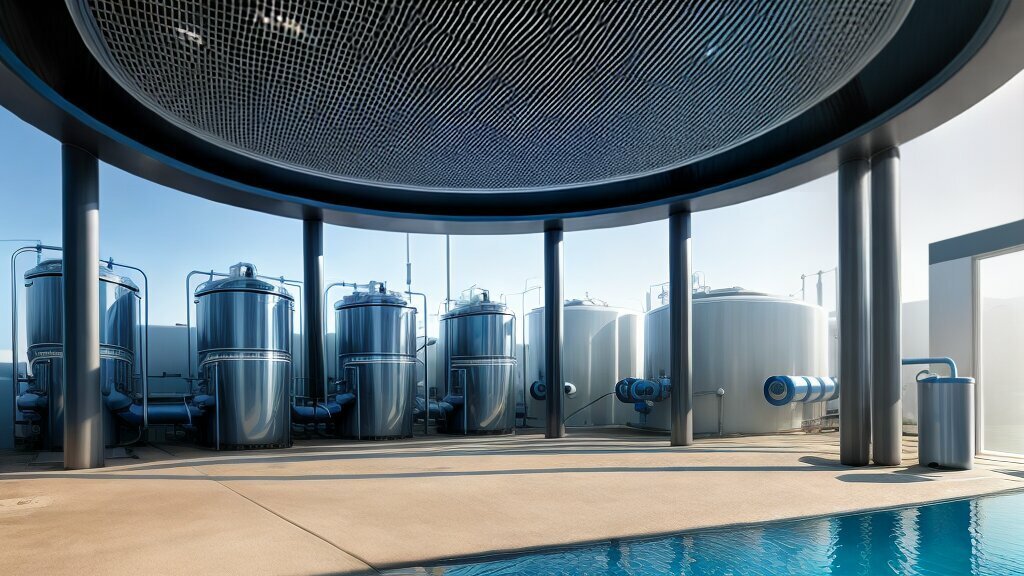
By incorporating on-site water treatment and recycling systems into building design and operation, net-zero water status can be achieved, reducing environmental impact and promoting sustainable water management.
Conclusion
Net-zero water buildings are not just a trend, they are a necessity in our quest for sustainable development. The strategies and techniques employed in these buildings are designed to achieve efficient and responsible water management. They highlight the importance of innovative water use and treatment systems that can help minimize our reliance on external water sources and conserve one of our most precious resources.
The adoption of these techniques can lead to significant benefits, not just for the environment but also for building occupants. They can result in substantial water and money savings while also promoting a healthy and sustainable lifestyle. However, it’s important to remember that these are just the first steps in a long journey towards responsible water management. Education and awareness about water conservation and sustainable practices are critical in making this effort a success.
Net-zero water buildings are an excellent example of how innovations in building design and technology can help us achieve a more sustainable future. It’s up to us to take the initiative and embrace these practices to create a better tomorrow. Let’s work together to create a world where we can all thrive, without compromising the health of our planet.
FAQ
Q: What are net-zero water buildings?
A: Net-zero water buildings are structures that strive to achieve a balance between the amount of water used within the building and the amount of water that is generated or harvested on-site. These buildings employ various strategies and techniques to minimize water consumption and maximize water conservation.
Q: How do net-zero water buildings contribute to water conservation?
A: Net-zero water buildings contribute to water conservation by implementing water efficiency strategies and techniques. These buildings aim to reduce water demand, capture and reuse rainwater, treat and recycle wastewater, and promote responsible water use behaviors among occupants.
Q: What are some water efficiency strategies employed in net-zero buildings?
A: Water efficiency strategies in net-zero buildings include the installation of water-efficient fixtures such as low-flow toilets and faucets, implementing water-conscious landscaping practices, and promoting water-conscious behaviors among building occupants.
Q: What are some water conservation techniques used in net-zero buildings?
A: Water conservation techniques in net-zero buildings include rainwater harvesting, greywater systems, and on-site water treatment and recycling. These techniques enable the collection, treatment, and reuse of water for non-potable purposes, reducing the reliance on external water sources.
Q: How does rainwater harvesting work in net-zero water buildings?
A: Rainwater harvesting involves collecting and storing rainwater for use in non-potable applications such as irrigation and toilet flushing. This technique typically involves the installation of collection systems that capture rainwater from rooftops and other surfaces, which is then stored in tanks for future use.
Q: What are greywater systems and their role in net-zero water buildings?
A: Greywater systems involve the treatment and reuse of wastewater from sources like sinks, showers, and laundry for purposes such as landscape irrigation and toilet flushing. In net-zero water buildings, greywater systems help reduce water demand and promote responsible water management.
Q: How do water efficient fixtures contribute to net-zero water buildings?
A: Water efficient fixtures, such as low-flow toilets, faucets, and showers, are crucial in net-zero water buildings as they minimize water consumption without compromising performance. These fixtures help achieve water efficiency goals by reducing the amount of water used in everyday activities.
Q: What is xeriscaping and how does it promote water efficiency in net-zero water buildings?
A: Xeriscaping is a landscaping technique that promotes water efficiency in net-zero water buildings. It involves using drought-tolerant plants, efficient irrigation systems, and smart design principles to create beautiful landscapes while minimizing water use.
Q: How can behavioral changes contribute to water usage reduction in net-zero water buildings?
A: Behavioral changes play a significant role in achieving water usage reduction in net-zero water buildings. Promoting responsible water use habits among building occupants through education and awareness can lead to significant water savings and a more sustainable water management approach.
Q: What is the role of on-site water treatment and recycling in net-zero water buildings?
A: On-site water treatment and recycling systems in net-zero water buildings help close the water loop by purifying wastewater for reuse. These advanced treatment technologies reduce the need for external water sources, contributing to the overall water conservation efforts of the building.




